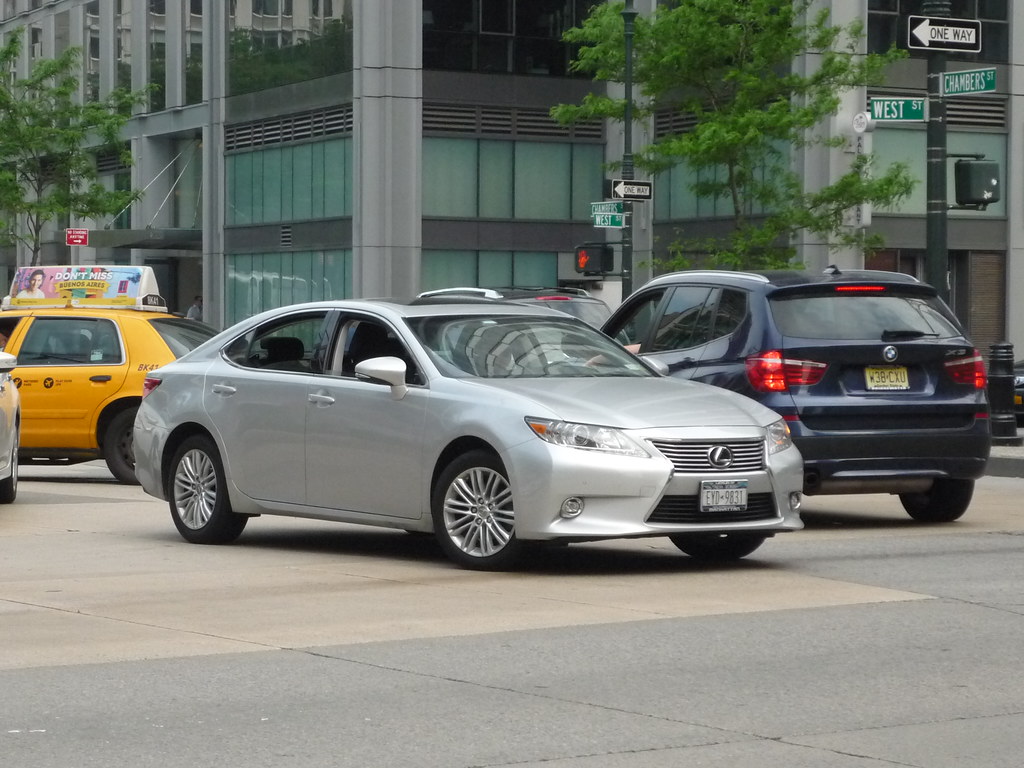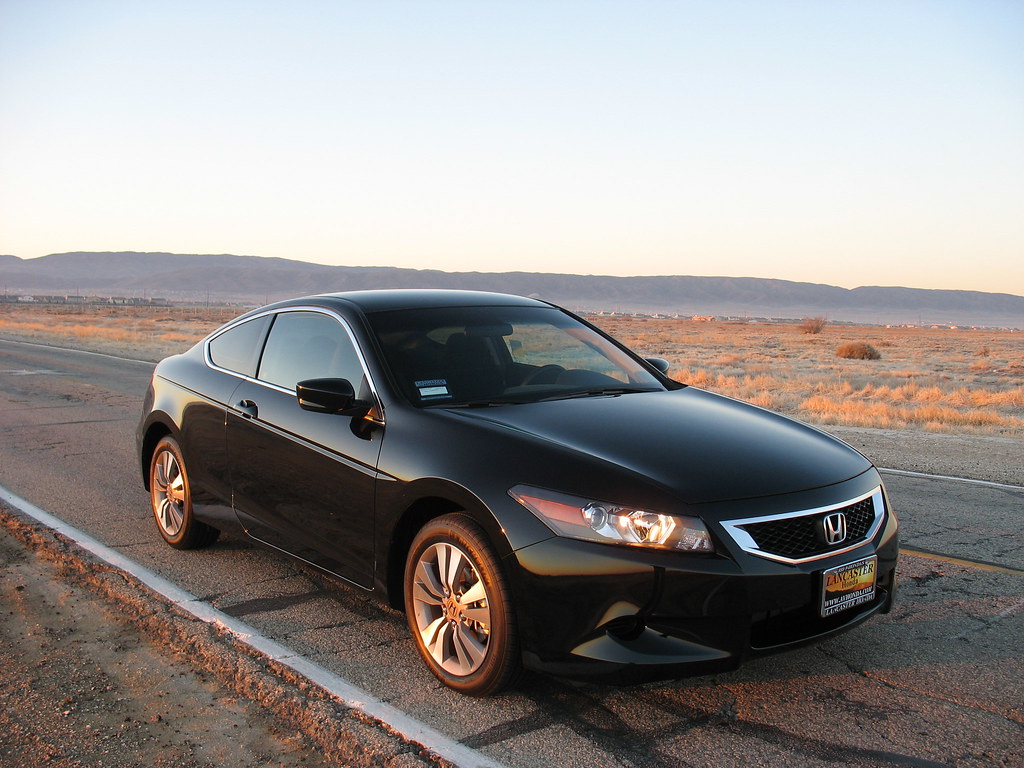
Car safety ratings are not just abstract numbers; they are crucial indicators for anyone choosing a vehicle, particularly for new drivers navigating today’s complex roadways. These standardized assessments, provided by organizations like the National Highway Traffic Safety Administration (NHTSA) and the Insurance Institute for Highway Safety (IIHS), offer critical transparency. They reveal a vehicle’s ability to protect occupants in a crash and its effectiveness in preventing accidents through advanced technologies. Understanding these ratings is paramount for making informed decisions that prioritize safety.
Despite notable advancements in automotive safety over the past two decades, a concerning trend has emerged. The IIHS reports that the last five years have seen a higher rate of accidents and fatalities on U.S. roads compared to the preceding 12 years, with the fatal accident rate now at 2.8 per billion miles. While “new cars are safer than they’ve ever been,” iSeeCars Executive Analyst Karl Brauer notes that factors like distracted driving and higher speeds regrettably counter these improvements. For new drivers, distinguishing genuine vehicle safety from marketing is challenging; automakers highlight sleek designs, but these don’t guarantee superior protection. This article explores specific 2024 and 2025 models exhibiting weaknesses in rigorous safety testing.
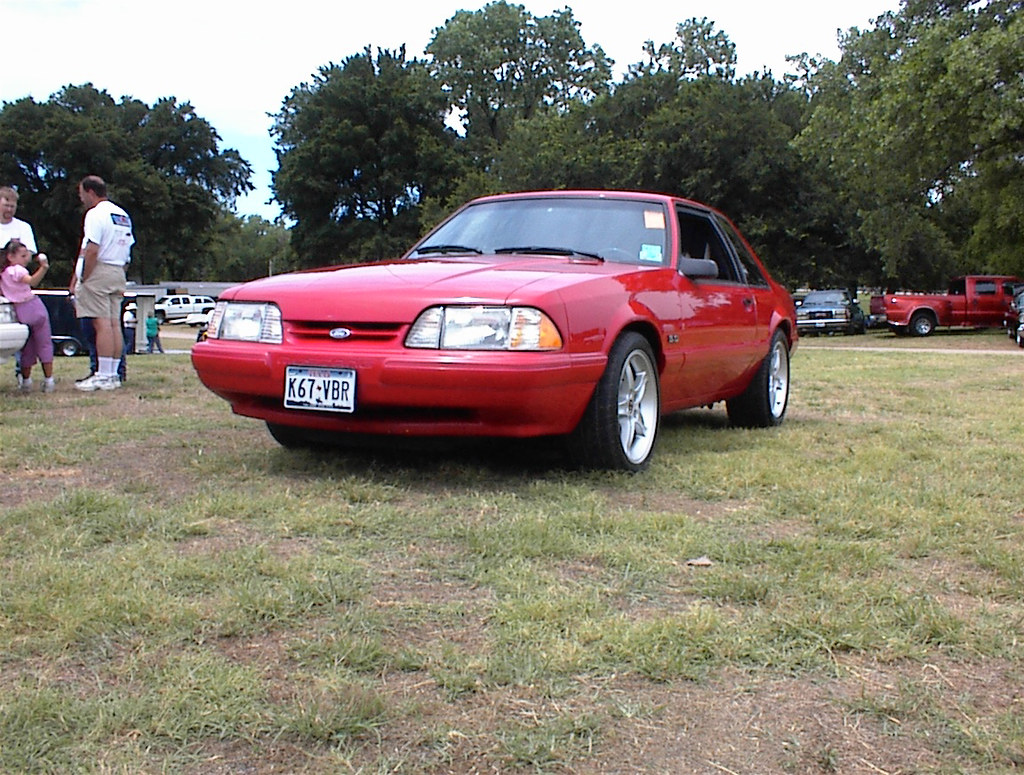
1. **2025 Ford Mustang Coupe**
The 2025 Ford Mustang Coupe continues its legacy of performance and style, promising a thrilling driving experience with sharper looks and powerful engine options. However, beneath this performance veneer, the Mustang exhibits concerning safety vulnerabilities. While NHTSA awarded a five-star overall safety rating, detailed results reveal specific weak points: rear side-impact protection received only a four-star rating, and the vehicle’s rollover risk is 7.9%. These findings challenge the notion of uniform protection across all crash scenarios, especially for new drivers.
IIHS assessments further underscore the Mustang’s structural deficiencies, earning a “Marginal” rating in the structure and safety cage category. This indicates weaker lower body protection and signs of structural strain, suggesting the architecture might not adequately resist deformation, potentially compromising occupant survival space. For those transporting children, LATCH access for backseat child seats also received a “Marginal” rating, complicating secure installation.
Regarding advanced safety technology, forward collision warning and crash-imminent braking are standard. Yet, vital driver-assist systems like lane keeping and adaptive cruise control are often optional upgrades. For a vehicle appealing to younger, performance-oriented drivers, this selective inclusion represents a significant gap, potentially leaving some owners less protected if they opt for base models. This necessitates careful consideration of safety package inclusions.
Car Model Information: 2008 Ford Mustang GT Premium
Name: Ford Mustang
Caption: 2018 Ford Mustang GT 5.0
Aka: Ford T5 (Germany)
Manufacturer: Ford Motor Company
Production: March 1964 – present
ModelYears: 1965–present
Class: Unbulleted list
BodyStyle: Unbulleted list
Layout: Front-engine, rear-wheel-drive layout
Categories: 1970s cars, 1980s cars, 1990s cars, 2+2 coupés, 2000s cars
Summary: The Ford Mustang is an American automobile manufactured and marketed by Ford since 1964, as Ford’s longest nameplate in continuous production. Currently in its seventh generation, it is the fifth-best selling Ford car nameplate. The namesake of the “pony car” automobile segment, the Mustang was developed as a highly styled line of sporty coupes and convertibles derived from existing model lines, initially distinguished by its pronounced “long hood, short deck” proportions.
Originally predicted to sell 100,000 vehicles yearly, the 1965 Mustang became the most successful vehicle launch since the 1927 Model A. Introduced on April 17, 1964 (16 days after the Plymouth Barracuda), over 400,000 units were sold in its first year; the one-millionth Mustang was sold within two years of its launch. In August 2018, Ford produced the 10-millionth Mustang; matching the first 1965 Mustang, the vehicle was a 2019 Wimbledon White convertible with a V8 engine.
The success of the Mustang launch led to multiple competitors from other American manufacturers, including the Chevrolet Camaro and Pontiac Firebird (1967), AMC Javelin (1968), and Dodge Challenger (1970). It also competed with the Plymouth Barracuda, which was launched around the same time. The Mustang also had an effect on designs of coupes worldwide, leading to the marketing of the Toyota Celica and Ford Capri in the United States (the latter, by Lincoln-Mercury). The Mercury Cougar was launched in 1967 as a unique-bodied higher-trim alternative to the Mustang; during the 1970s, it included more features and was marketed as a personal luxury car.
From 1965 until 2004, the Mustang shared chassis commonality with other Ford model lines, staying rear-wheel-drive throughout its production. From 1965 to 1973, the Mustang was derived from the 1960 Ford Falcon compact. From 1974 until 1978, the Mustang (denoted Mustang II) was a longer-wheelbase version of the Ford Pinto. From 1979 until 2004, the Mustang shared its Fox platform chassis with 14 other Ford vehicles (becoming the final one to use the Fox architecture). Since 2005, Ford has produced two generations of the Mustang, each using a distinct platform unique to the model line.
Through its production, multiple nameplates have been associated with the Ford Mustang series, including GT, Mach 1, Boss 302/429, Cobra (separate from Shelby Cobra), and Bullitt, along with “5.0” fender badging (denoting 4.9 L OHV or 5.0 L DOHC V8 engines).
Get more information about: Ford Mustang
Buying a high-performing used car >>>
Brand: Ford Model: Mustang
Price: $16,785 Mileage: 81,832 mi.
Read more about: Get Ready to Rev Your Engines: A Deep Dive Into Val Kilmer’s Jaw-Dropping Car Collection, Both On-Screen and Off!
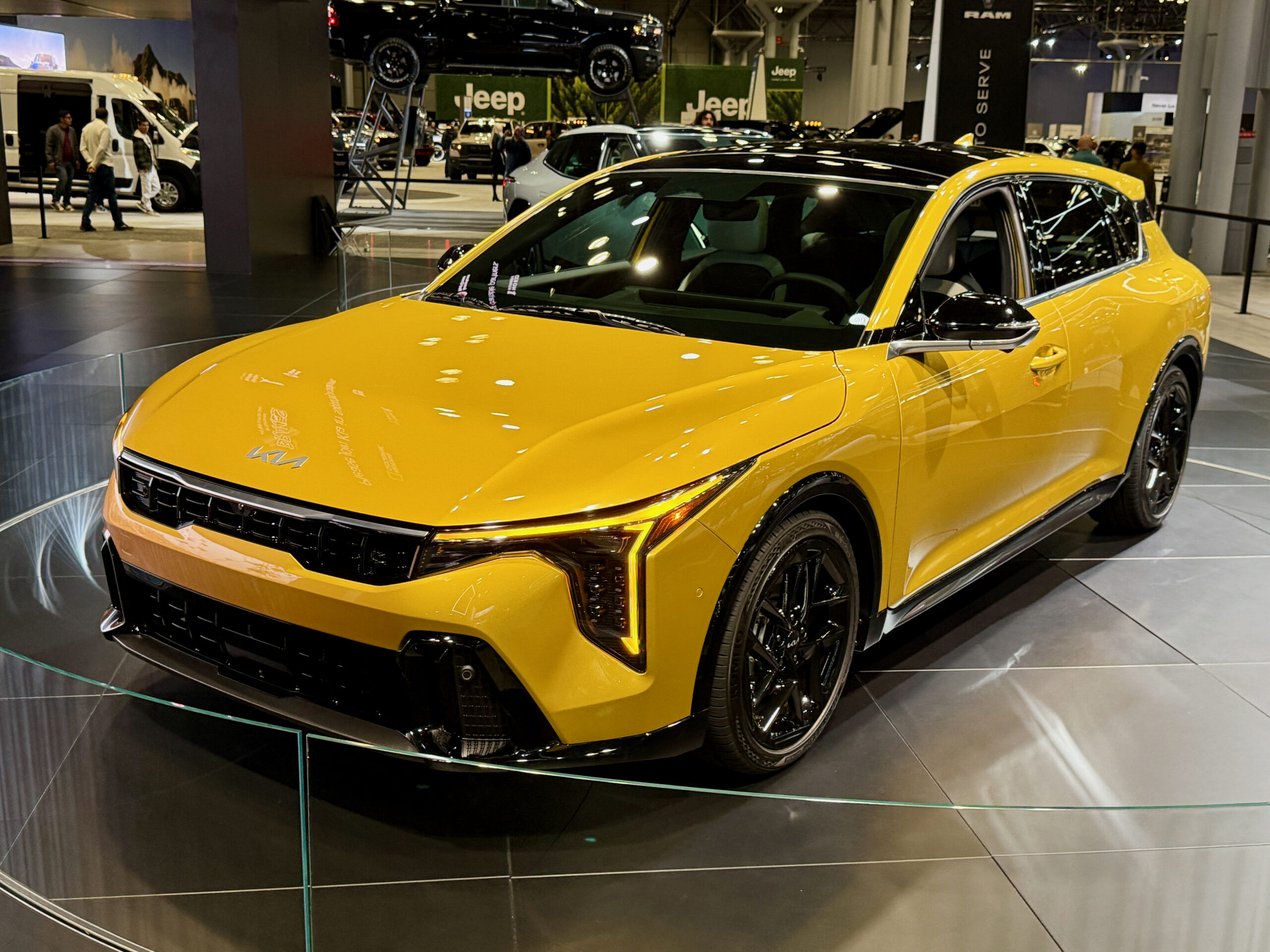
2. **2025 Kia K4**
The 2025 Kia K4 introduces a new era for Kia’s compact sedan, replacing the Forte, with an aggressive aesthetic, major interior tech upgrade, and generous cabin space. It seemingly offers a bold digital interface, enhanced safety features, and advanced cruise control at a competitive price. However, initial impressions can mask underlying safety shortcomings, particularly regarding fundamental crash performance.
Despite a five-star overall NHTSA rating, early K4 test results exposed a critical weak spot: rear passenger protection. The vehicle received a “Poor” score in the updated IIHS moderate overlap front test for models produced before February 2025. This updated test, which includes a rear passenger dummy, is highly indicative of real-world safety, addressing a common blind spot in traditional evaluations.
The “Poor” rating stemmed from severe issues: uncontrolled dummy movement signified failed restraint systems, and a “Marginal” risk for chest injury to the rear passenger dummy highlighted inadequate protection. These findings are a significant red flag for new drivers transporting friends or family. Additionally, a 9.9% rollover risk adds potential vulnerability. For a brand-new redesign, the K4’s performance in key crash evaluations falls short of contemporary safety expectations.
Car Model Information: 2025 Kia K4 EX
Name: Kia K4
Manufacturer: Kia
ModelCode: CL4
Production: 2024–present
ModelYears: 2025–present (North America)
Assembly: unbulleted list
Class: Compact car
Engine: Petrol engine,Hyundai Smartstream engine#G3LE,Hyundai Smartstream engine#G4FM,Hyundai Smartstream engine#G4FP,Hyundai Smartstream engine#G4NS
Transmission: Manual transmission,Automatic transmission,8-speed automatic,Dual-clutch transmission,Continuously variable transmission
Related: Hyundai Elantra#CN7
BodyStyle: Sedan (automobile)
Platform: Hyundai-Kia K3 platform
Predecessor: ubl
Wheelbase: 2720 mm
Abbr: on
Length: ubl
Width: 1850 mm
Height: 1420 mm
Weight: convert
Caption: 2025 Kia K4 LX Sedan (Canada)
Drivetrain: Mild hybrid
Powerout: ubl
Categories: All Wikipedia articles written in British English, Articles with short description, CS1 Spanish-language sources (es), Cars introduced in 2024, Cars of Mexico
Summary: The Kia K4 is a compact car manufactured by South Korean automaker Kia. It was introduced in March 2024 as a replacement for the Forte/K3/Cerato, while the K3 nameplate was transferred to a subcompact car.
The car was first introduced on 21 March 2024, and was fully introduced on 27 March 2024, at the 2024 New York International Auto Show. It is available as a 4-door sedan and a 5-door hatchback.
Get more information about: Kia K4
Buying a high-performing used car >>>
Brand: Kia Model: K4
Price: $23,655 Mileage: 10,098 mi.
Read more about: Decoding America’s Automotive Stratification: An In-Depth Look at Vehicle Classifications
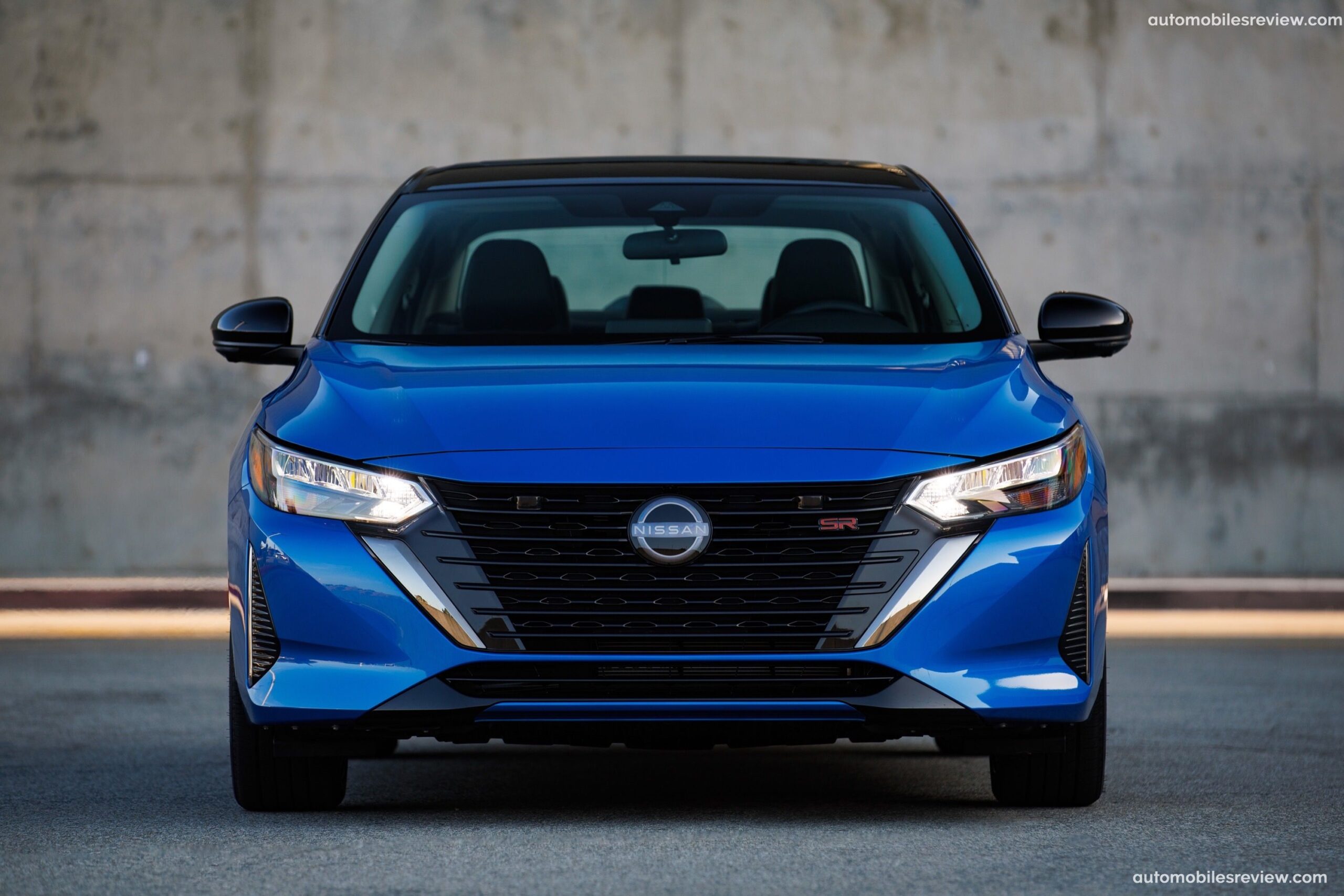
3. **2025 Nissan Sentra**
The 2025 Nissan Sentra initially appears well-equipped with standard safety technologies like forward collision warning, lane departure alert, blind-spot detection, and crash imminent braking. This foundational suite contributes to its five-star overall NHTSA rating. Yet, this is qualified by a four-star frontal crash rating for passengers, indicating room for improvement in head-on collision protection.
More rigorous scrutiny by the IIHS, with updated testing, revealed substantial concerns. In the updated moderate overlap front test, the Sentra’s rating plummeted to “Marginal.” This was driven by compromised rear-seat safety, where restraints were insufficient, and dummy movement indicated clear head and chest injury risks for rear occupants—a critical deficiency for new drivers carrying passengers.
Beyond frontal performance, the Sentra’s side-impact test rating was “Acceptable”—not optimal for continuous safety improvement. Its pedestrian crash prevention system also garnered a “Marginal” rating in low-light conditions. These factors, coupled with a “Poor” headlight rating and a 9.9% rollover risk, make recommending the Sentra challenging. A recent recall for unsecured driver’s seats further complicates its profile, suggesting quality control issues.
Car Model Information: 2023 Nissan Sentra SV
Name: Nissan Sentra
Caption: 2021 Nissan Sentra SR (B18; Canada)
Manufacturer: Nissan
Aka: Nissan Sunny
Production: 1982–present
Class: Subcompact car
Predecessor: Nissan Sunny#B310
Categories: 1990s cars, 2000s cars, 2010s cars, 2020s cars, All Wikipedia articles written in American English
Summary: The Nissan Sentra is a series of automobiles manufactured by the Japanese automaker Nissan since 1982. Since 1999, the Sentra has been categorized as a compact car, while previously it occupied the subcompact class. Until 2006, Sentra was a rebadged export version of the Japanese Nissan Sunny, but since the 2013 model year, Sentra is a rebadged export version of the Sylphy. The Sentra nameplate is not used in Japan. Many other countries in Latin America sell their versions of the Sunny as the Sentra. In Mexico, the first three generations of the Sentra were known as the Nissan Tsuru (Japanese for crane), and the B13 model was sold under that name until 2017, alongside the updated models badged as Sentra.
In North America, the Sentra currently serves as Nissan’s compact car, despite being rated as a mid-size car by the EPA due to its interior volume since the 2007 model year. While previous Sentras were subcompacts, the Sentra has grown over the years, with the Nissan Versa having replaced the Sentra in the entry-level area.
The Sentra name was created for Nissan by Ira Bachrach of NameLab, and Bachrach describes the origin as “Nissan wanted consumers to understand that it was quite safe even though it was small. The word Sentra sounds like central as well as sentry, which evokes images of safety.”
Get more information about: Nissan Sentra
Buying a high-performing used car >>>
Brand: Nissan Model: Sentra
Price: $19,190 Mileage: 44,963 mi.
Read more about: Buyer Beware: 10 Flashy Coupes and Sedans That Turn into Bottomless Money Pits Past 80,000 Miles
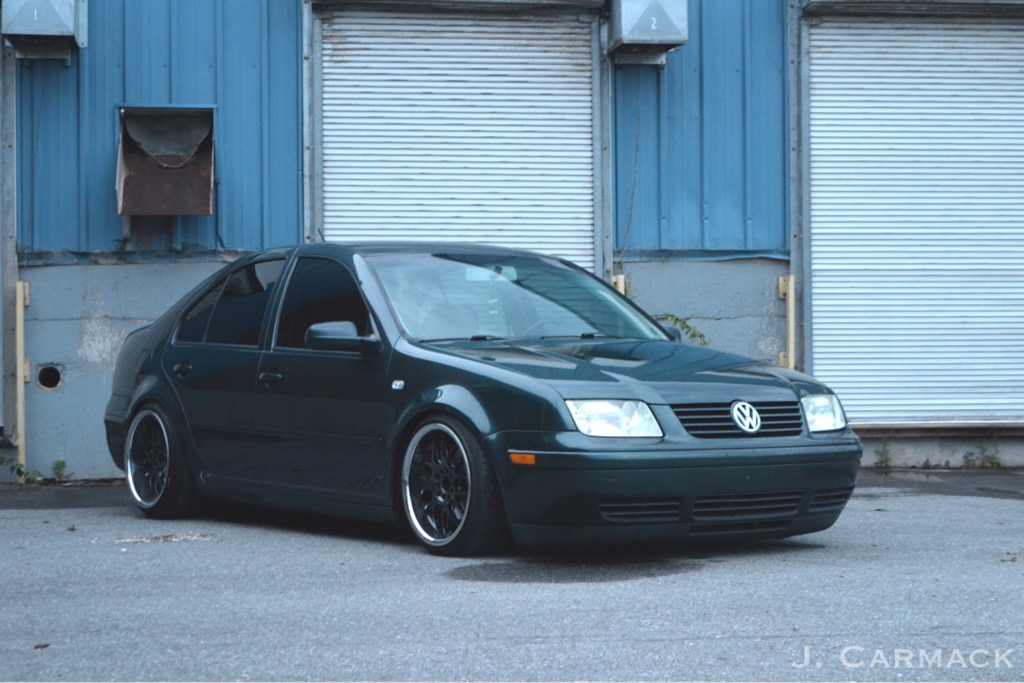
4. **2025 Volkswagen Jetta**
The Volkswagen Jetta has maintained a reputation as a robust and practical choice, often cited as one of the most reliable models. The 2025 iteration receives a mild refresh, introducing an elegant exterior and subtle tech enhancements, but no major structural overhauls. It retains the familiar 1.5-liter turbo engine and now includes VW’s IQ.DRIVE suite as standard, encompassing lane keeping, automatic emergency braking, and forward collision warning. While NHTSA gives it a five-star overall rating, deeper specifics reveal critical safety red flags.
NHTSA’s detailed ratings show frontal crash performance for both driver and front passenger surprisingly declined to four stars, a step down from perfect. This suggests less-than-optimal protective capability in head-on collisions. The IIHS issued a “Poor” rating for seat belt reminders, indicating this fundamental safety feature may not effectively prompt occupants. Crucially, the standard front crash prevention system achieved only a “Marginal” rating, implying compromised effectiveness in certain real-world situations.
Injury scores from IIHS testing were also concerning, with “Marginal” ratings for the driver’s pelvis and the rear passenger’s torso. While side crash scores were generally solid, these specific injury risks highlight uneven protection. Compounding concerns is a high 13% rollover risk, significantly undermining perceived security, particularly for new drivers. Even LATCH anchor ease of use was rated merely “Acceptable.” These shortcomings suggest the Jetta’s perceived reliability doesn’t consistently translate into comprehensive modern safety.
Car Model Information: 2013 Volkswagen Jetta SportWagen TDI
Name: Volkswagen Jetta
Production: 1979–present
Class: Compact car
Sp: uk
Categories: 1980s cars, 1990s cars, 2000s cars, 2010s cars, All-wheel-drive vehicles
Summary: The Volkswagen Jetta () is a compact car/small family car manufactured and marketed by Volkswagen since 1979. Positioned to fill a sedan niche slightly above the firm’s Golf hatchback, it has been marketed over seven generations, variously as the Atlantic, Vento, Bora, City Jetta, Jetta City, GLI, Jetta, Clasico, and Sagitar (in China).
The Jetta has been offered in two- and four-door saloon / sedan and sometimes as five-door wagon / estate versions. Since the original version in 1980, the car has grown in size and power with each generation. By mid-2011, almost 10 million Jettas have been produced and sold all over the world. As of April 2014, Volkswagen marketed over 14 million, becoming its top selling model.
Get more information about: Volkswagen Jetta
Buying a high-performing used car >>>
Brand: Volkswagen Model: Jetta
Price: $11,685 Mileage: 98,627 mi.
Read more about: Beyond the Sticker: Investigating 10 Cars That Truly Deliver (or Disappoint) on MPG Promises
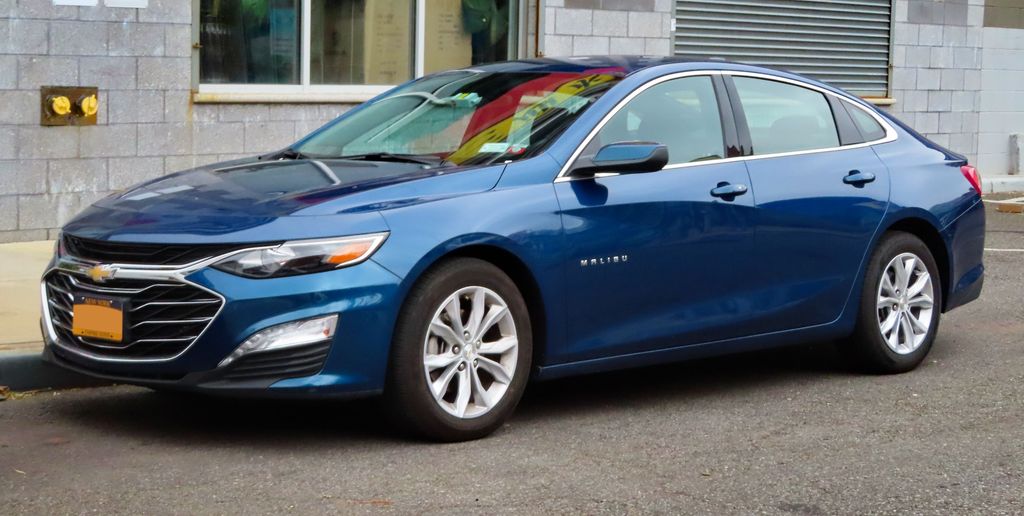
5. **2025 Chevrolet Malibu**
The 2025 Chevrolet Malibu quietly concludes nearly six decades of sedan production as Chevy pivots to EVs. This final model offers few significant updates, especially in safety. While including standard features like automatic emergency braking, forward collision warning, and lane departure alert, and achieving a five-star NHTSA rating, these are baseline in today’s market. Crash-imminent braking only meets standards on higher trims, and dynamic brake support fails entirely, pointing to inconsistent safety.
More critical safety concerns for the 2025 Malibu appear in updated IIHS testing. The vehicle exhibited significant vulnerabilities. Side-impact protection rated “Poor,” indicating substantial failure in lateral collisions. Its structural cage also couldn’t hold up under crash forces, severely compromising survival space. The front crash pedestrian test received a “Poor” rating, suggesting inadequate protection for vulnerable road users, while driver head and neck injury risks also rated “Poor.”
Further, both rear-seat and driver protection received only “Marginal” marks for head safety in updated side-impact tests, highlighting a pervasive lack of robust protection across seating positions and impact types. Even minor yet crucial details fell short: headlights and child seat anchors scored “Marginal,” and LATCH usability mirrored this, indicating difficulties with proper illumination and secure child seat installation. These results suggest a vehicle struggling to meet contemporary safety expectations.
Car Model Information: 2022 Chevrolet Malibu FWD LT
Name: Chevrolet Malibu
Manufacturer: Chevrolet
ModelYears: 1964–1983,1997–2025
Class: Mid-size car
Layout: Front-engine, rear-wheel-drive layout
Predecessor: Chevrolet Chevelle
Successor: Chevrolet Celebrity
Caption: Ninth generation Chevrolet Malibu
Categories: 1970s cars, 1980s cars, 1990s cars, 2000s cars, 2010s cars
Summary: The Chevrolet Malibu is a mid-size car that was manufactured and marketed by Chevrolet from 1964 to 1983 and from 1997 to 2025. The Malibu began as a trim-level of the Chevrolet Chevelle, becoming its own model line in 1978. Originally a rear-wheel-drive intermediate, GM revived the Malibu nameplate as a front-wheel-drive car in 1997.
Named after the coastal community of Malibu, California, the Malibu has been marketed primarily in North America, with the eighth generation introduced globally. Malibu production in the US ended in November 2024, as the Fairfax plant is being retooled for the upcoming second-generation Chevrolet Bolt. The Malibu is now the last sedan to have been sold by Chevrolet in the US.
Get more information about: Chevrolet Malibu
Buying a high-performing used car >>>
Brand: Chevrolet Model: Malibu
Price: $16,697 Mileage: 67,370 mi.
Read more about: Beyond the Showroom Shine: Uncovering the Deep Discounts on Trucks (and More) Lingering on Dealer Lots
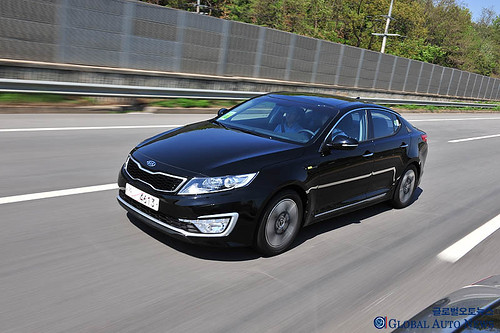
6. **2025 Kia K5**
The 2025 Kia K5 often presents itself as a compelling package for the modern driver, blending sleek aesthetics with comfort and a well-appointed interior, all without a premium price tag. Its standard driver-assistance technologies, including Forward Collision-Avoidance Assist, Lane Keeping Assist, and Driver Attention Warning, create an initial impression of comprehensive safety. Higher trims further enhance this perception with advanced features like Highway Driving Assist and Junction Turning Detection, making the K5 seem like a significant step forward in automotive technology. This is further bolstered by a five-star overall safety rating from the National Highway Traffic Safety Administration (NHTSA).
However, a closer examination of the latest Insurance Institute for Highway Safety (IIHS) results reveals critical limitations, particularly concerning rear seat protection. In the updated moderate overlap front test, which now incorporates a rear passenger dummy, the K5 received an overall “Poor” rating. This alarming score indicates significant vulnerabilities for rear occupants during a frontal collision, directly contradicting the initial positive impression derived from its overall NHTSA rating and standard safety tech suite.
Specifically, the IIHS found that rear head and neck protection did not hold up, and the seatbelt system demonstrated only “Marginal” performance. Dummy movement during the test raised clear red flags, strongly suggesting inadequate rear restraints that failed to manage impact forces effectively. The side-impact test results were also concerning, yielding a “Marginal” rating, which casts doubt on the K5’s ability to protect occupants in real-world side collisions. While the K5 excels in many aspects, including reliable front crash prevention systems and offering substantial value, these key shortcomings in contemporary safety evaluations mean its five-star image doesn’t fully represent its protective capabilities.
Car Model Information: 2024 Kia K5 GT
Name: Kia Optima/K5
Caption: Kia K5 (DL3)
Manufacturer: Kia
Aka: Kia Magentis (2000–2010),Kia Optima (2000–2020),Kia Lotze (2005–2010)
Production: 2000–present
Class: Mid-size car
Layout: Front-engine, front-wheel-drive layout,Front-engine, four-wheel-drive layout
Predecessor: Kia Credos
ModelYears: 2001–present
Categories: 2010s cars, All Wikipedia articles written in American English, All articles with unsourced statements, Articles containing Korean-language text, Articles with short description
Summary: The Kia K5 (Korean: 기아 K5), formerly known as the Kia Optima (Korean: 기아 옵티마), is a mid-size car manufactured by Kia since 2000 and marketed globally through various nameplates. First generation cars were mostly marketed as the Optima, although the Kia Magentis name was used in Europe and Canada when sales began there in 2002. For the second-generation models, Kia used the Kia Lotze and Kia K5 name for the South Korean market, and the Magentis name globally, except in the United States, Canada, Malaysia and the Middle East, where the Optima name was retained until the 2021 model year. The K5 name is used for all markets since the introduction of the fifth generation in 2019.
Get more information about: Kia K5
Buying a high-performing used car >>>
Brand: Kia Model: K5
Price: $26,991 Mileage: 46,100 mi.
Read more about: Decoding America’s Automotive Stratification: An In-Depth Look at Vehicle Classifications
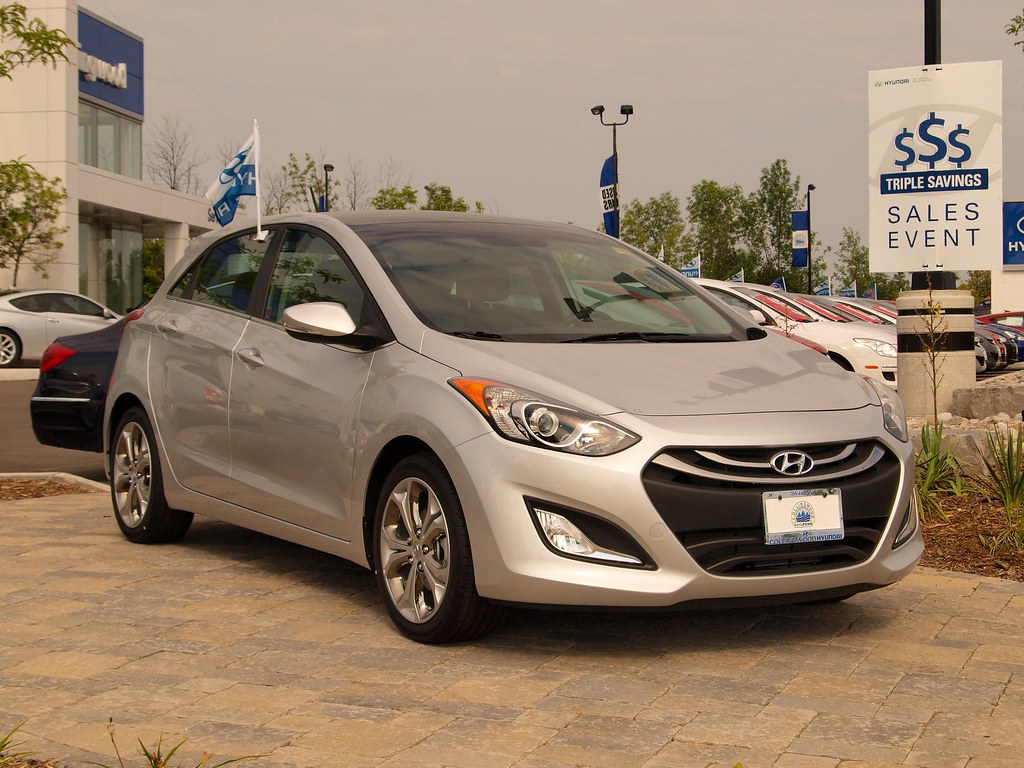
7. **2025 Hyundai Elantra**
The 2025 Hyundai Elantra, with a starting price around $22,125, has a clear appeal, particularly with its comprehensive SmartSense package as standard. This suite integrates crucial safety features such as forward collision avoidance, lane-keeping assist, blind-spot alerts, and smart cruise control, positioning the Elantra as a seemingly well-equipped compact sedan for daily use. Coupled with a user-friendly infotainment system, it projects an image of a practical and secure choice for drivers seeking modern conveniences and baseline protection.
Despite these attractive standard features and a five-star overall NHTSA rating, a deeper dive into this year’s IIHS crash results uncovers a significant regression in its safety performance. In the updated moderate overlap front test, which critically evaluates protection for both front and rear passengers, the Elantra was awarded a “Marginal” rating. While the front restraints performed adequately, the rear seat’s inability to securely contain the dummy was a major concern.
The IIHS noted specific failures in the rear seat: the dummy’s shoulder belt shifted toward the neck, and the lap belt migrated into the abdomen, resulting in a “Poor” rating for restraint performance in the rear. This represents a substantial backslide for a model that was previously recognized as a “Top Safety Pick+” just last year, suggesting that while some safety elements like seat belt reminders and child seat anchors remained “Acceptable,” the overall rear occupant protection has been compromised. Considering a history of safety-related complaints for the Elantra dating back to 2009, this recent decline, despite good scores in pedestrian detection and headlights, is a tough point to overlook for safety-conscious buyers.
Car Model Information: 2023 Hyundai ELANTRA SEL
Name: Hyundai Elantra/Avante
Manufacturer: Hyundai Motor Company
Aka: Hyundai Avante,Hyundai Lantra (1990–2000, Australia and Europe),Hyundai i30 Sedan (2020–present, Australia)
Production: 1990–present
Class: Compact car
Layout: Front-engine, front-wheel-drive layout
Predecessor: Hyundai Stellar
Categories: 2000s cars, 2010s cars, 2020s cars, All Wikipedia articles written in British English, All articles with bare URLs for citations
Summary: The Hyundai Elantra (Korean: 현대 엘란트라), also known as the Hyundai Avante (Korean: 현대 아반떼), is a compact car produced by the South Korean manufacturer Hyundai since 1990.
In Australia and some European markets, the Elantra was initially marketed as the Lantra during its first two generations, due to the similarly named “Elante” trim for the Mitsubishi Magna in the former market, and the Lotus Elan in the latter. After Mitsubishi Motors Australia Limited (MMAL) dropped the “Elante” trim from the Magna range, and Lotus ceased production of the Elan in 1995, Hyundai standardized the “Elantra” name for both Australian and European markets following the introduction of the third-generation in 2001. The first-generation model was also sold as the Bimantara Nenggala in Indonesia between 1995 and 1998.
Its home market name, Avante was first appeared starting from the second generation in 1995. The “Avante” name is not used in most export markets due to its similarity with Audi’s “Avant” designation, used for their station wagon models. As of 2018, Singapore is the only export market outside South Korea to utilize the “Avante” name.
Since the seventh-generation, the “Elantra” name was retired in Australia, when Hyundai intergrated it into the i30 range, badging it as the i30 Sedan.
Get more information about: Hyundai Elantra
Buying a high-performing used car >>>
Brand: Hyundai Model: Elantra
Price: $16,930 Mileage: 53,874 mi.
Read more about: Beyond the Sticker: Investigating 10 Cars That Truly Deliver (or Disappoint) on MPG Promises
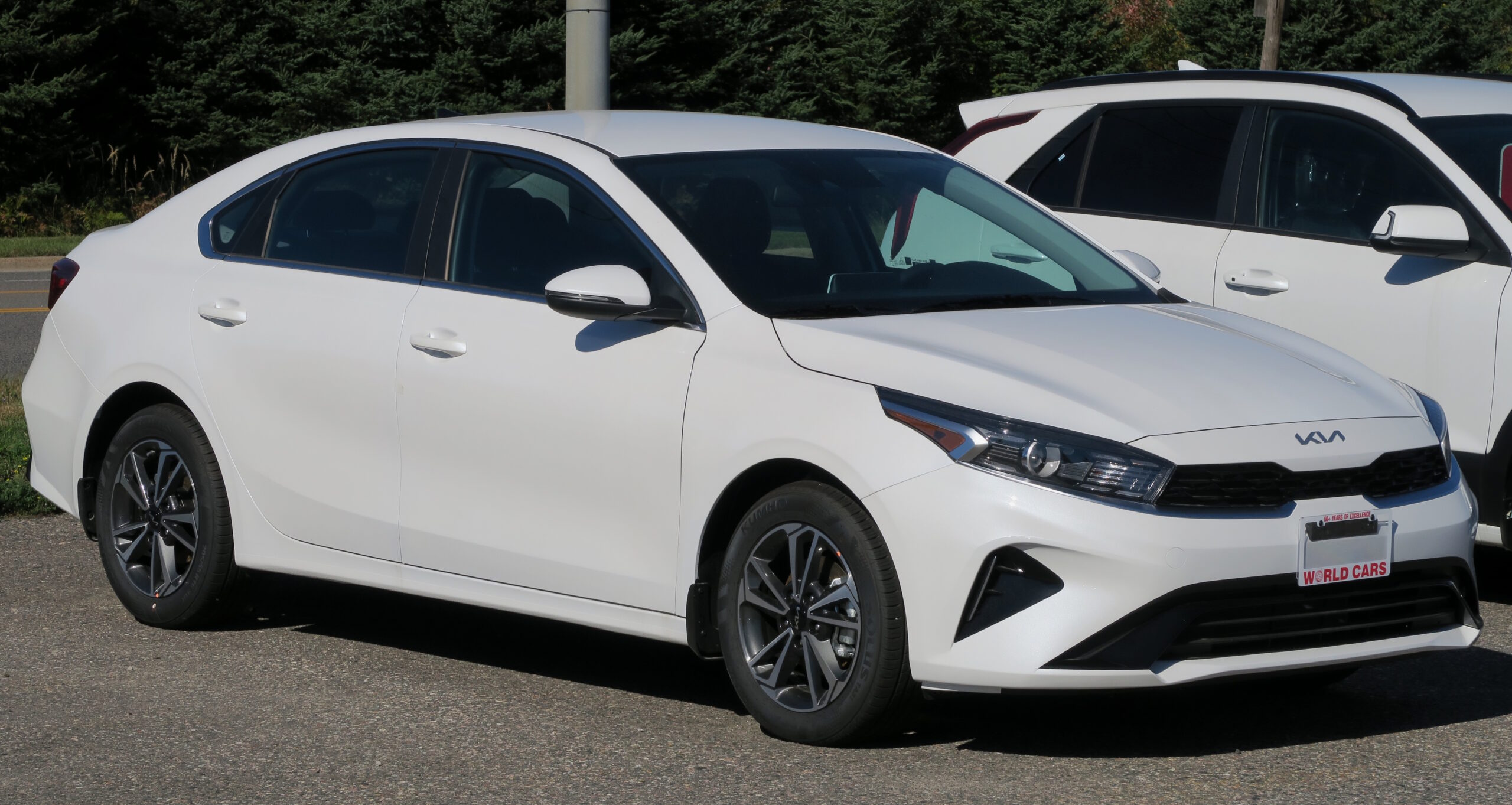
8. **2024 Kia Forte**
The 2024 Kia Forte, a compact sedan now being phased out and succeeded by the K4, still merits discussion due to its widespread presence and budget-friendly appeal. Despite its low price, the Forte manages to avoid looking like a typical budget car and consistently ranks as one of the cheapest new vehicles available. Its design, largely unchanged since 2019, includes basic safety technology such as lane departure warning, forward collision alerts, and optional blind-spot monitoring for an additional cost. For new drivers or those with tight budgets, this combination of affordability and essential tech might initially seem like a reasonable compromise.
However, once crash data from both NHTSA and IIHS is thoroughly examined, the Forte’s safety profile reveals significant weaknesses. NHTSA awarded the Forte a four-star overall rating, but critically, the front passenger score dropped to three stars, indicating compromised protection in frontal impacts for occupants in that position. The IIHS assessments paint an even more concerning picture, with the Forte scoring “Poor” in both the moderate overlap front and side-impact tests, highlighting severe deficiencies in its ability to withstand common crash scenarios.
Rear-seat protection in the Forte was particularly alarming, receiving “Poor” ratings across the board for head, neck, torso, and pelvis injury risks. The IIHS detailed how the seatbelt system slipped during impact, and in the side test, the dummy’s head violently contacted the window sill, underscoring a severe lack of adequate occupant containment and protection. Furthermore, the vehicle’s headlights were rated “Poor,” and its crash prevention technology only meets federal standards if specific, often pricier, trims are selected. Even the structural integrity of the safety cage and pedestrian crash prevention were rated merely “Marginal.” With a history of complaints and its eventual replacement by the K4, the 2024 Kia Forte presents a challenging recommendation for anyone prioritizing comprehensive safety.
Car Model Information: 2021 Kia Forte LXS
Name: Kia Forte
Manufacturer: Kia
Aka: Kia Cerato,Kia K3 (South Korea and China)
Production: 2008–2024
Class: Compact car
Layout: Front-engine, front-wheel drive layout
Related: Kia Ceed,Hyundai Elantra
Predecessor: Kia Cerato,Kia Spectra
Successor: Kia K4 (2024)
Categories: 2010s cars, ANCAP small family cars, All Wikipedia articles written in British English, All articles with dead YouTube links, All articles with dead external links
Summary: The Kia Forte (Korean: 기아 포르테), known as the K3 in Asia, the Forte K3 or Shuma in China and Cerato in South America, Australia, New Zealand and Russia, is a compact car manufactured by South Korean automaker Kia from mid-2008 until 2024, replacing the Kia Spectra. Throughout its production, it was available in two-door coupe, four-door sedan, five-door hatchback variants. It was not sold in Europe, which got the similarly sized Kia Ceed (except for Russia and Ukraine, where the Ceed and the Forte were sold together).
In some markets, such as Korea, Australia and Brazil, the Forte is marketed as Kia Cerato, replacing its predecessor of the same name. In Colombia and Singapore, the name Cerato Forte was used for the second generation, while Naza Automotive Manufacturing of Malaysia has assembled the vehicle since 2009, selling it there under the name Naza Forte.
Production of the Forte ended in 2024 and it was replaced by the K4, as Kia realigned their passenger car nomenclature, with the K3 name being transferred to a subcompact car replacing the Kia Rio.
Get more information about: Kia Forte
Buying a high-performing used car >>>
Brand: Kia Model: Forte
Price: $10,868 Mileage: 109,744 mi.
Read more about: 9 Compact Cars Making a Big Splash in 2025: Expert Picks and Detailed Analysis
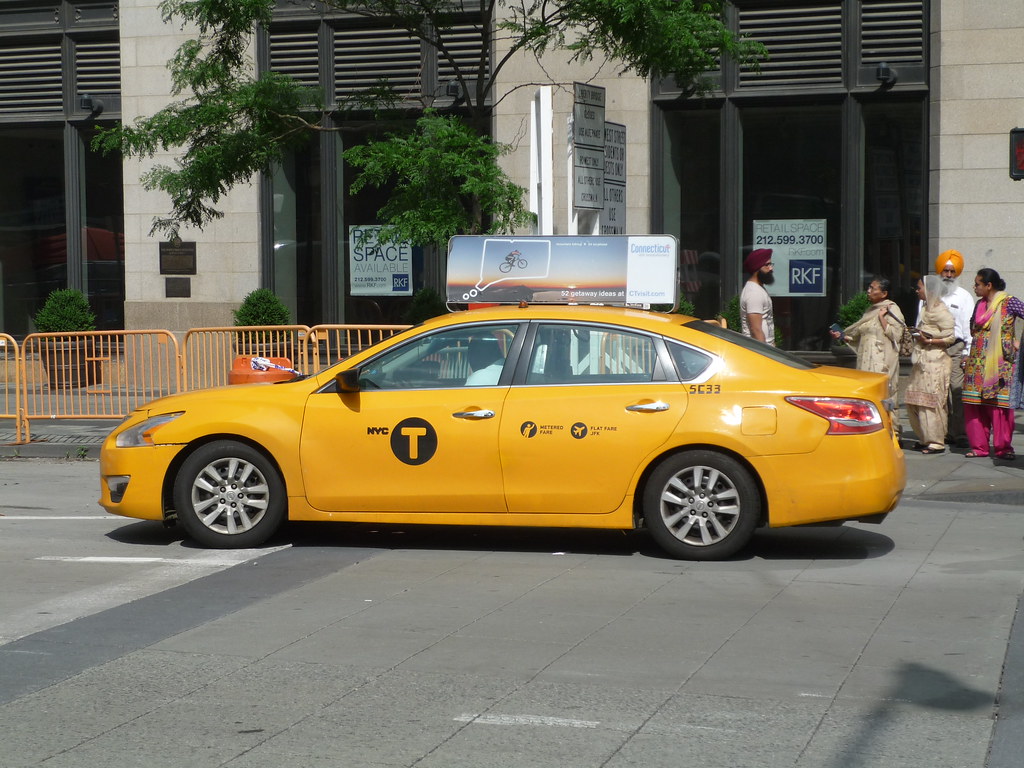
9. **2025 Nissan Altima**
The 2025 Nissan Altima navigates a complex path, drawing on its decades-long reputation for comfort and fuel economy, while simultaneously incorporating Nissan’s full Safety Shield 360 suite across all trims. This means even base models now come equipped with automatic emergency braking, blind-spot alerts, and rear cross-traffic warning, providing a foundational layer of modern safety tech that many consumers appreciate. On the surface, this might suggest a well-rounded and safe midsize sedan choice.
Yet, as a vehicle that has not undergone a full redesign since 2019, the Altima is increasingly showing its age, particularly in the realm of crash safety. The IIHS awarded the Altima a “Poor” rating in the revised side-impact test, which indicates substantial weaknesses in its structural performance when subjected to lateral collisions. This critical failure highlights a concerning inability of the vehicle’s structure to adequately protect occupants in one of the most common and dangerous types of accidents.
The Altima’s performance in the moderate overlap front test was similarly underwhelming, garnering an overall “Marginal” rating. Rear passenger protection was identified as a notable weak point, with “Poor” scores for torso and pelvis impact, further suggesting an uneven level of safety across different seating positions. Compounding these issues, the vehicle’s safety cage itself also received a “Poor” rating, implying a compromised survival space in severe impacts. While NHTSA gave it a five-star side crash rating, its frontal crash score dropped to four stars, including for the front passenger, indicating inconsistencies. Pedestrian detection was rated “Marginal,” and vehicle-to-vehicle crash prevention came in at “Poor.” These results collectively indicate a widening safety gap for the Altima compared to its more recently redesigned competitors, making it a challenging choice for those who prioritize robust crash protection.
Car Model Information: 2025 Nissan Altima S
Name: Nissan Altima
Caption: 2024 Nissan Altima SR (L34; US)
Manufacturer: Nissan
Aka: Nissan Bluebird
Production: 1992–present
Class: Compact car
Predecessor: Nissan Bluebird,Nissan Stanza
ModelYears: 1993–present
Categories: 2000s cars, 2010s cars, 2020s cars, All-wheel-drive vehicles, All Wikipedia articles written in American English
Summary: The Nissan Altima is a mid-size car manufactured by Nissan since 1992. It is a continuation of the Nissan Bluebird line, which began in 1955.
The Altima has historically been larger, more powerful, and more luxurious than the Nissan Sentra but less so than the Nissan Maxima. The first through fourth-generation cars were manufactured exclusively in the United States and officially sold in North and South America, along with the Middle East and Australia. For other markets, Nissan sold a related mid-size sedan called the Nissan Teana which was between the Altima and Maxima in terms of size. In 2013, the Teana became a rebadged version of the fifth-generation Altima.
The name “Altima” was originally applied to a top trim line of the Nissan Leopard for the Japanese market in 1986, and then to the Nissan Laurel Altima mid-size car sold in Central America and the Caribbean before 1992. In 1992, Nissan discontinued the Stanza which was a Nissan Bluebird clone, replacing it with the US-built Altima, while remaining a compact car. The first Altima was produced in June 1992, as a 1993 model. All Altima models for the North American market were built in Smyrna, Tennessee, until June 2004, when Nissan’s Canton, Mississippi plant also began producing the model to meet high demand.
Get more information about: Nissan Altima
Buying a high-performing used car >>>
Brand: Nissan Model: Altima
Price: $26,490 Mileage: 11 mi.
Read more about: Buyer Beware: 10 Flashy Coupes and Sedans That Turn into Bottomless Money Pits Past 80,000 Miles
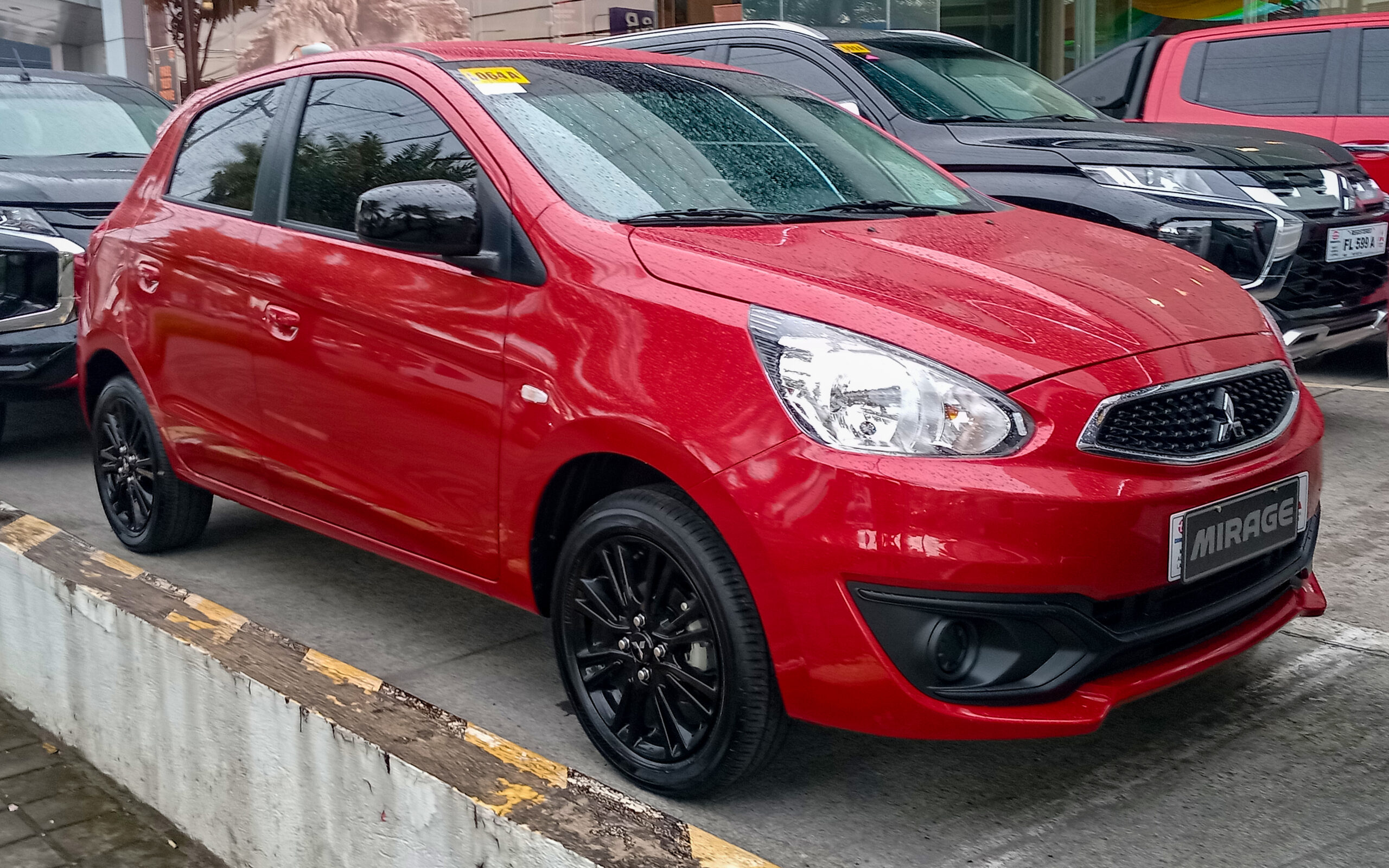
10. **2024 Mitsubishi Mirage**
The 2024 Mitsubishi Mirage stands out for its remarkably low price point and excellent fuel economy, boasting up to 43 miles per gallon on the highway. For budget-conscious shoppers, these attributes can be highly appealing. Mitsubishi highlights its “RISE” body structure, which is designed to enhance occupant protection. However, the reality of its safety performance, as revealed by independent crash tests, suggests that this affordability comes at a significant cost in terms of occupant safety. The Mirage’s current generation dates back to 2014, and its fundamental safety architecture has seen minimal improvements since then.
NHTSA’s evaluations assigned the Mirage a four-star overall rating, but this seemingly adequate score is heavily skewed by a starkly low two-star result in the side crash test. This indicates severe deficiencies in protecting occupants during lateral impacts, placing it among the weakest performers in this critical area. The IIHS findings corroborate these concerns, with the small overlap front test yielding a “Marginal” rating, where the safety cage exhibited signs of collapse and lower leg and foot protection was rated “Poor.”
Perhaps most alarming is the Mirage’s exceptionally high rollover risk, which stands at 16.4%, making it the highest on this list of dangerous vehicles. This statistic is a significant red flag, substantially increasing the risk of severe injury or fatality in the event of a loss of control. Furthermore, the frontal crash test identified considerable intrusion into the driver’s space, directly threatening occupant survival. While standard features include forward collision mitigation and seven airbags, these are often insufficient to compensate for fundamental structural weaknesses. Crucial safety technologies such as crash-imminent braking and lane departure warning are typically restricted to higher, pricier trims, and dynamic brake support failed to pass standards altogether. The Mirage has consistently ranked high in driver death rates, a sobering statistic that underscores its inherent safety limitations and is a contributing factor to Mitsubishi’s decision to withdraw the model from the American market. For consumers prioritizing safety over initial cost savings, opting for a pre-owned, more reliable vehicle might be a far more prudent decision.
Beyond individual model shortcomings, a broader perspective on vehicle safety reveals overarching trends and critical factors that new drivers must understand. Our examination of specific 2024-2025 models has highlighted how seemingly advanced or affordable vehicles can still fall short in rigorous safety evaluations. However, vehicle design is only one piece of the intricate safety puzzle; brand performance, vehicle size, and critically, driver behavior, play equally significant roles in determining real-world accident rates and outcomes.
When we consider overall brand performance, the data from iSeeCars is particularly illuminating. Tesla, despite its reputation for advanced driver-assist technology, surprisingly leads with the highest fatal accident rate among all car brands, at 5.6 fatal accidents per billion vehicle miles. It is closely followed by Kia at 5.5, Buick at 4.8, Dodge at 4.4, and Hyundai at 3.9, all significantly exceeding the overall average of 2.8. This suggests that while individual models might perform well in isolated crash tests, the aggregate brand performance often reflects a complex interplay of vehicle design and typical driver demographics or behaviors associated with those brands.
Vehicle size also emerges as a paramount factor in accident severity and fatality rates. Small (subcompact and compact) cars, as identified by the iSeeCars study, have the highest fatal accident rate at 3.6 fatal accidents per billion miles. This is markedly higher than the overall average and stands in stark contrast to full-size models, which exhibit the lowest fatality rates at 2.0. As iSeeCars Executive Analyst Karl Brauer succinctly puts it, “It’s difficult to overcome physics, even with high-strength steel and airbags. When two small cars collide the forces are equalized and both vehicles tend to hold up well. But if a compact hatchback and a full-size pickup truck try to occupy the same space at the same time, the smaller car always loses.” While SUVs and trucks generally offer a size and weight advantage, their higher center of gravity can increase the risk of rollovers, which substantially elevate fatality risks, as seen in models like the Ford Bronco and Mercedes-Benz G-Class which have fatal accident rates over twice the average for SUVs.
Car Model Information: 2023 Mitsubishi Mirage Ralliart
Name: Mitsubishi Mirage
Caption: Mitsubishi Mirage (sixth generation)
Manufacturer: Mitsubishi Motors
Production: 1978–2003,2012–present
Class: Subcompact car
Layout: Front-engine, front-wheel-drive
Predecessor: Mitsubishi Lancer (A70)
Successor: Mitsubishi Lancer#Eighth generation (2000)
Categories: 1980s cars, 1990s cars, 2000s cars, 2010s cars, 2020s cars
Summary: The Mitsubishi Mirage is a range of cars produced by the Japanese manufacturer Mitsubishi from 1978 until 2003 and again since. The hatchback models produced between 1978 and 2003 were classified as subcompact cars, while the sedan and station wagon models, marketed prominently as the Mitsubishi Lancer, were the compact offerings. The liftback introduced in 1988 complemented the sedan as an additional compact offering, and the coupé of 1991 fitted in with the subcompact range. The current Mirage model is a subcompact hatchback and sedan and it replaces the Mitsubishi Colt sold between 2002 and 2012.
Get more information about: Mitsubishi Mirage
Buying a high-performing used car >>>
Brand: Mitsubishi Model: Mirage
Price: $16,980 Mileage: 11,832 mi.
Read more about: Beyond the Hype: The 15 Overpriced Cars and Brands That Experts Say You Should Absolutely Avoid in 2024-2025
Ultimately, the most profound influence on vehicle safety is not found in steel and airbags, but behind the wheel. Karl Brauer emphasizes this crucial point: “A vehicle’s size, weight, and height certainly play a part in its ability to protect passengers in a crash. But the biggest contributor to occupant safety is avoiding a crash, and the biggest factor in crash avoidance is driver behavior. A focused, alert driver, traveling at a legal or prudent speed, without being under the influence of drugs or alcohol, is the most likely to arrive safely regardless of the vehicle they’re driving.” This underscores the sobering reality that even the safest, most technologically advanced vehicle cannot fully compensate for distracted driving, excessive speed, or impaired judgment. For new drivers, understanding these systemic risks and embracing responsible driving practices is the single most effective safety feature they can ever employ. Choosing a vehicle wisely based on independent safety ratings is essential, but it must always be paired with attentive and conscientious driving to truly maximize protection on our roads.


